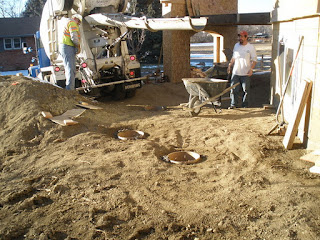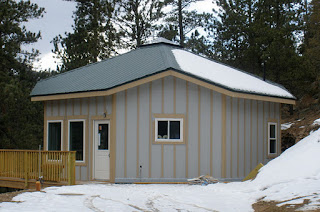Stewart residence with super insulated Solargon addition. Longmont, Co.
Advantages of Super Insulated Homes:
- They conserve energy without impacting the occupants’ lifestyle.
- They are more comfortable, with no drafts, cold spots, or temperature stratification.
- They are healthier because air quality is not left to chance but is controlled and can be monitored.
- There is commonly a higher relative humidity. People who are bothered by dry house air in the winter will be more comfortable.
- They are safer because backdrafting of combustion appliances is impossible.
- They are quieter to outside noise because of thicker walls and better windows.
- They save money, frequently 75% of heating and cooling costs.
- They are more durable because of the quality of the materials used, the care in construction, and because of applied building science principles.
- They are environmentally friendly, helping to build a sustainable future.
Source: Green Econometrics research
Figure 2 demonstrates that heating cost per square foot for good insulation saves approximately $2.90 per square foot in comparison to no-insulation at all. If we compare the heating costs savings to the cost of insulation, the payback period for insulation can be achieved in a year under most circumstances.Note: Figures based on 1" polyurethane foam.(R-7.6) Solargon 30's use 5.5" ( R-42) of polyurethane foam. Costs and savings will be proportionally more.
Super insulated building is now a force in the marketplace. Super insulated building practices are included in Canadian building codes and are standard practice in many parts of Europe. Changes to the Model Energy Code have been implemented by the US Department of Energy and US Department of Housing and Urban Development in this country. Monetary incentives, such as Energy Rated Mortgage which increase the borrowing power of buyers of energy efficient homes, are in place at banks right now. Programs like the Energy Star Homes Program, sponsored by the Environmental Protection Agency and the Department of Energy, encourage builders to build Superinsulated homes and provide a rating system to evaluate energy performance.
Consumers interested in healthy indoor environments, decreased energy costs, environmental friendly lifestyles, and quality in their homes can insure that super insulated building becomes standard practice in the US.
Write us at solargonhomes@gmail.com for information about a Solargon home.















